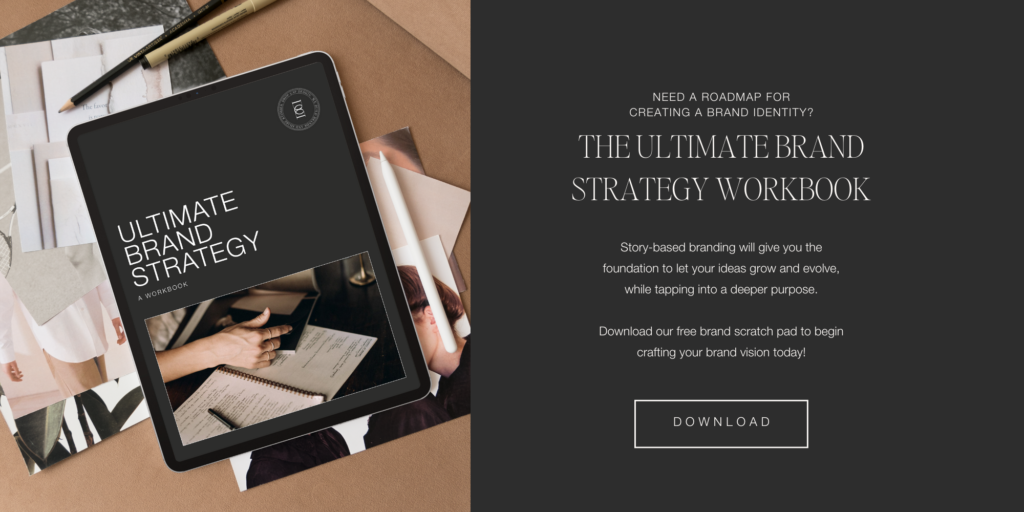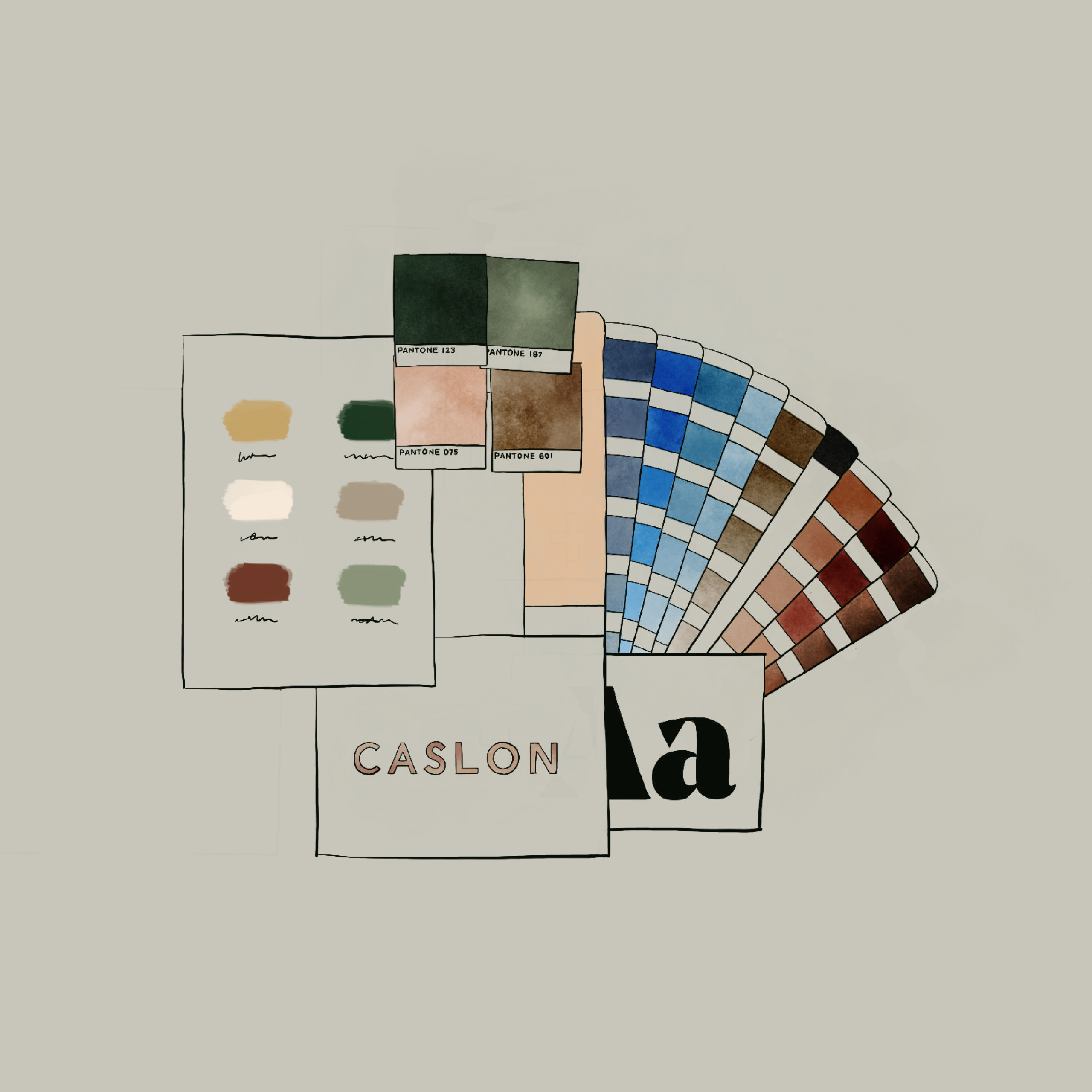In the age of the Internet, it can be hard to figure out exactly who you’re talking to when the world is at your fingertips. But brand archetypes allow you to find your ideal niche market, making you more likely to build a loyal following and—yeah–find more customers.
Why are brand archetypes important?
You might be wondering how archetypes are useful. But if you’ve ever taken a personality test like the ENNEAGRAM, you know just how powerful typing can be when relating to the people around you, and branding is no different.
However, archetypes do vary from personality types in a few key ways. Archetypes are narrative devices that speak to the universal human experience and help us contextualize life experiences. It helps us to articulate certain emotions, desires, and fears that we all feel at some point or another.
But back to your business.

Finding your brand’s archetype will help you build your business in 4 ways.
- First, you’ll know the power that your brand holds. Understanding your brand’s potential on a larger scale (like the entire human experience) really gives your brand some staying power.
- Using brand archetypes will make branding so much easier from a psychological and strategic point of view. Second, you’ll easily be able to identify your customer. If you’re struggling to write your audience persona, understanding archetypes will help you understand what your client is looking for and how you meet their need. You’ll also have a framework for visual symbolism.
- As we get into your visual style, brand archetypes can help you uncover key symbols and images that will help you communicate what your brand stands for without saying a word.
- Finally, you’ll have strong connections with your customers. Research shows that half of our buying decisions are based on our emotions, so understanding your brand on a deeper psychological level will shape how you interact with your customers emotionally and solve a deeper pain point.
So, let’s learn about the 12 archetypes so you can start identifying which one best suits your brand.
The 12 Main Brand Archetypes

THE CARETAKER
Generosity • Compassion • Hospitality • Warmth
The Caregiver archetype is passionate about service. The goal of the Caretaker is to help, support, nurture, and provide every step of the way, putting the customer first. A Caretaker brand should focus first on the people they are serving. Through genuine support and assistance and a desire to provide true value, the Caretaker brand succeeds by putting people first while making them feel safe, loved, and cared for.
There are four ways that this archetype might influence the way you build your brand—
- Essence—Taking an active role in helping others and ensuring their needs are met.
- Blind Spot—May develop a martyr tendency or experience burnout if boundaries are non-existent.
- Personality—Considerate, thoughtful, kind, warm, engaging, and patient.
- Opportunity—Consider having a philanthropic side to your business because it will naturally align with your values of generosity and compassion.

THE ROYAL
Elegance • Guidance • Justice • Quality
The Royal archetype desires control. The goal of a Royal brand is to prosper, lead by example, and gain influence. A Royal brand should live out the lifestyle they are promoting, leading by example and creating an air of exclusivity and aspiration. By employing influence and maintaining high standards, others feel they can embody the same royal privilege by following along with the brand.
There are four ways that this archetype might influence the way you build your brand—
- Essence—Embodying the highest quality, refined look and living out remarkably high standards.
- Blind Spot—May develop a martyr tendency or become too aspirational and authoritative, losing the ability to connect with others. burnout if boundaries are non-existent.
- Personality—Refined, articulate, poised, polished, and calm.
- Opportunity—Step into your role as a tastemaker and natural-born leader. Your audience will seek guidance, so be mindful of your influential capabilities.

THE CREATOR
Mastery • Beauty • Expertise • Originality
The Creator brand seeks innovation. The goal of a Creator is to make, express, create, and bring their vision to life. A Creator brand must focus primarily on developing their unique artistic skill. It is of utmost importance that the vision and craft of the Creator is honored, cultivated, and celebrated, because others primarily want to learn how to make things like they can.
There are four ways that this archetype might influence the way you build your brand—
- Essence—Investing in their creativity and imagination, inviting others to see the world through their creative lens.
- Blind Spot—They may become too much of a perfectionist, have diva tendencies, and not put themselves out there for fear of failure.
- Personality—Unique, descriptive, visual, educational, focused, passionate.
- Opportunity—Show your creative process, inspiration, and always be willing to try new things. Your audience follows you to learn how you do what you do, so show them!

THE EXPLORER
Curiosity • Adventure • Awe • Resilience
The Explorer brand craves freedom. The goal of an Explorer is to experience a more fulfilling life, finding and creating more autonomy. An Explorer brand constantly seeks out new experiences, searches for excitement, and embarks on wild adventures. They are focused on discovering the most authentic expression of their desires, fulfilling their purpose, and developing their love for the world.
There are four ways that this archetype might influence the way you build your brand—
- Essence—Being autonomous and independent, remaining ambitious and genuine to your vision and yourself.
- Blind Spot—May start to aimlessly wander, become a misfit, and miss the opportunity to incorporate their discoveries into their lives in a meaningful way.
- Personality—Open-minded, resourceful, curious, inquisitive, cultured.
- Opportunity—Travel often and share ideas and adventures as you go. Take your audience along for the ride because your love of new experiences will inspire and motivate them.

THE GURU
Insightful • Mindful • Sincere • Credible
The Guru brand desires to understand. The goal of a Guru is to interpret the world and share their insights with others. A Guru brand seeks information and knowledge through self-reflection, research, objectivity, and diligence. They soak up the information in the world in order to share the truth of what they find – helping others feel educated and informed in the process.
There are 4 ways that this archetype might influence the way you build your brand—
- Essence—Reading, analyzing patterns, testing universal assumptions and sharing research, process, and insights.
- Blind Spot—May become overly concerned with the details and lose the practicality of the information; knowledge may become more important than emotions.
- Personality—Factual, decisive, authoritative, intelligent, well-researched.
- Opportunity—Be willing to share the truth and lead your audience to discover insights and truth for themselves. This helps your audience feel informed, educated, and wise.

THE INNOCENT
Purity • Cheerfulness • Encouragement • Lighthearted
An Innocent brand desires safety. The goal of an innocent is to be happy, spark joy, and keep life pure and light. An Innocent brand strives to always do the right thing, be trustworthy, and stay positive. They are straightforward in their pursuits, operating out of faith and optimism to help others feel joyful, motivated, and encouraged along the way.
There are 4 ways that this archetype might influence the way you build your brand—
- Essence—Establish strong integrity standards in order to live morally sound and share what makes them happy, while also being mindful of their reputation.
- Blind Spot—May over-simplify hard truths and have an overly idealized view of the world.
- Personality—Simple, concise, straightforward, cheerful, kind.
- Opportunity—Spread optimism and joy by consistently showing gratitude, finding the silver lining, and helping others to do the same.

THE REBEL
Confident • Unapologetic • Shocking • Aggressive
The Rebel demands liberation. The goal of a Rebel is to overturn what isn’t working and challenge the status quo. A Rebel brand disrupts and destroys the way things have always been done. They go after the shock value, defy norms, and never conform. Through outrageously unapologetic antics and radical freedom, these brands make their customers feel stimulated, impulsive and thrilled as they feel permission to break the rules, too.
There are 4 ways that this archetype might influence the way you build your brand—
- Essence—Speaking up about things they don’t agree with, taking risks, and doing the unpopular thing because they refuse to conform.
- Blind Spot—May cross over to the dark side, resulting in a less savory shock factor and taking the fun just a bit too far.
- Personality—Candid, raw, honest, unfiltered, genuine, cunning.
- Opportunity—Challenge the status quo and get your audience to partake in your rebellion, creating the feeling of a movement.

THE VISIONARY
Connection • Wonder • Impact • Enthusiasm
The Visionary desires power. The goal of a Visionary is to transform lives, make dreams come true, and leverage the power of the universe. A Visionary brand develops a vision and lives by it. They help others transform their own lives by using new methods and sharing their magic with the world. They fascinate and enchant, bringing people with them to the brink of something transcendent.
There are 4 ways that this archetype might influence the way you build your brand—
- Essence—Knowing the latest trends and helping define new ones. Transform into the best version of themselves so their audience can, too.
- Blind Spot—May become manipulative in their persuasion and close-minded to others’ ideas that don’t align with their own.
- Personality—Expansive, moving, articulate, passionate, enthusiastic.
- Opportunity—Reveal your insights and the lessons that you have learned along the way so that your audience can begin their own journey of personal discovery and inspiration.

THE CHAMPION
Determination • Courage • Resilience • Discipline
The Champion pursues mastery. The goal of a Champion is to improve the world through their expertise and courage. A Champion’s brand is strong and competent – taking action, making clear decisions, and overcoming challenges along the way. Their influence is in their competence, courage, energy, and determination, making us all feel inspired to overcome challenges of our own and get to the other side.
There are 4 ways that this archetype might influence the way you build your brand—
- Essence—Inspiring others by showing the challenges they have overcome and are continuing to take on for the sake of personal achievement.
- Blind Spot—May come across as arrogant, always looking for a fight, or a bit aggressive.
- Personality—Motivational, self-confident, self-disciplined, direct.
- Opportunity—Challenge your audience, motivate them to accomplish something for themselves and experience pride in their personal achievements.

THE LOVER
Sensual • Intimate • Exhilarated • Elegant
The Lover desires intimacy. The goal of a Lover is to be in a relationship, practice indulgence, and connect to their desires. A Lover’s brand aims to become more attractive, build experiences that appeal to all of the senses, and use their passion and commitment to make customers feel spellbound, captivated, and excited. Their focus is on beauty, sensuality, and expression.
There are 4 ways that this archetype might influence the way you build your brand—
- Essence—Professing your love, sharing your passion, focusing on relationship-building, and not hiding your beauty.
- Blind Spot—May lose own identity in pursuit of pleasing others.
- Personality—Affectionate, sensual, romantic, warm, caring, soft.
- Opportunity—Give special attention to members of your audience, inviting them to join your community and celebrate the beauty in others.

THE COMEDIAN
Lighthearted • Joyful • Clever • Personable
The Comedian focuses on joy. The goal of a Comedian is to live a life of fun, humor, and play. – adding light to the world as you go. A Comedian brand is playful, and lighthearted, and uses humor to invite others to see the silly and humorous in life. They help others feel giddy, entertained, amused, and at ease – reminding us that there’s nothing we need to take too seriously.
There are 4 ways that this archetype might influence the way you build your brand—
- Essence—Not taking yourself too seriously and letting the process of building your brand and your audience be fun and lighthearted.
- Blind Spot—May end up being a bit too frivolous with humor and miss getting to the point of the message.
- Personality—Enthusiastic, expressive, self-deprecating, silly, witty.
- Opportunity—Use your natural gift of wit to help your audience see life’s experiences through a new lens, encourage others to laugh at themselves and be a bit more playful and gracious.

THE FRIEND
Loyal • Relatable • Comforting • Accepting
The Friend seeks belonging. The goal of a Friend is to accept and encourage community, making others feel included along the way. A Friend brand develops solid values, is down to earth and relatable. Their customers can access them, and trust that they will be hardworking and kind – always acting in their best interest. Customers feel seen, understood, included, and trust in the process.
There are 4 ways that this archetype might influence the way you build your brand—
- Essence—Creating real connections and friendships among the audience, sharing normal parts of life, and is highly relatable.
- Blind Spot—May lose the sense of self while blending in and form lots of superficial relationships instead of deep ones.
- Personality—Friendly, honest, humble, practical, kind, transparent.
- Opportunity—Use your ability to keep it real and practice empathy as a way to make others feel included. Your lack of pretension will attract those who don’t feel like they’ve been understood.
SAVE FOR LATER



Implementing Brand Archetypes in Your Brand
Now that you know about the 12 main Brand Archetypes, you’re probably wondering how you can weave this kind of personality into your brand. I have a free brand strategy workbook to guide you through all elements of your brand strategy as you build a brand that captures the attention of your ideal audience.



